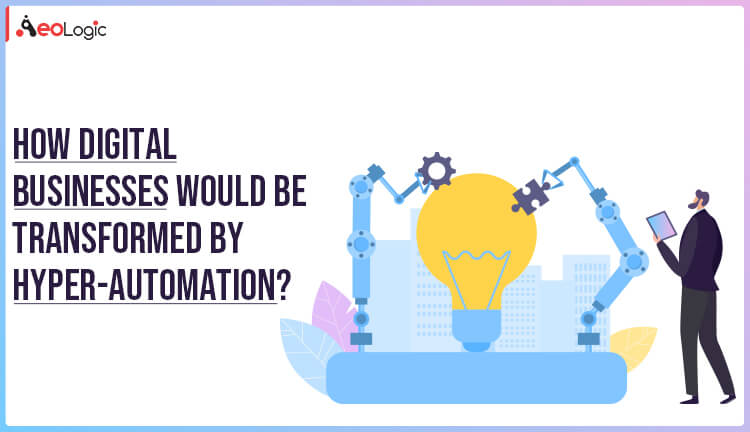Hyperautomation, this word has been getting a lot of attention last year. Try typing “hyper-automation” in Google Trends, you’ll notice the popularity of this word has taken a huge spike upwards in November 2019.
But what exactly is Hyper-automation? and what role does it play in digital businesses of these times?
Let’s start from the basics:
What is Hyper-automation?
Hyper-automation focuses mainly on the two aspects of business operations: First, to automating whatever can be automated within the organizational limits. And second, the transition to RPA combined with AI for automating complex processes with unstructured data and a significant level of ambiguity.
Benefits it serves
There are many immediate benefits from adopting hyper-automation.
- Productivity Optimization- automation performs practically faster than humans and without any errors.
- Improves Analysis- automation creates a lot of data which in turn can be used to analyze to get a better understanding of the process performance.
- End to End Automation- Simply automation alone can perform and complete single, simple tasks. Intelligent automation can take over entire processes that contain structured and unstructured data as well.
- Better Customer Experience- hyper-automation enables businesses by personalizing customer support, streamlining the processes, and making changes in the data-driven process, tailored to client expectations.
- Increased ROI- automating the right processes significantly lowers the lead time, wipes off the inefficiencies, and is never distracted by other different activities.
How is Hyper-Automation going to be the best digital strategy for businesses?
Hyper-automation has a lot to offer to businesses by giving them access to collaborative intelligence where humans and technology work together so as to help them perform their roles optimally.
Implemented correctly into your business pattern, hyper-automation can help significantly reduce human effort by doing a lot of work itself within a limited time, reduces the error to zero, improves the job quality by handling difficult, and exhausting human processes, which leads to a huge increase in productivity.
Hyper-automation does not mean the end of human jobs; rather, it only focuses on more value-based job roles. Machine learning algorithms can easily identify data patterns and trends more efficiently and generate a lot of different scenarios. This technology increases productivity, saves a ton of time and reduces cost exponentially. It even makes the process of data entry effortless by eliminating any possible human error.
Conclusion
Hyperautomation is still in its early stage but the future definitely looks promising. Hyperautomation will undoubtedly experience a snowball effect. The more companies benefit from intelligent automation, the more they will implement it in their processes. The day is not that far when we will see everyone using it and then it will become a standard approach in the digital transformation journey of any business.






